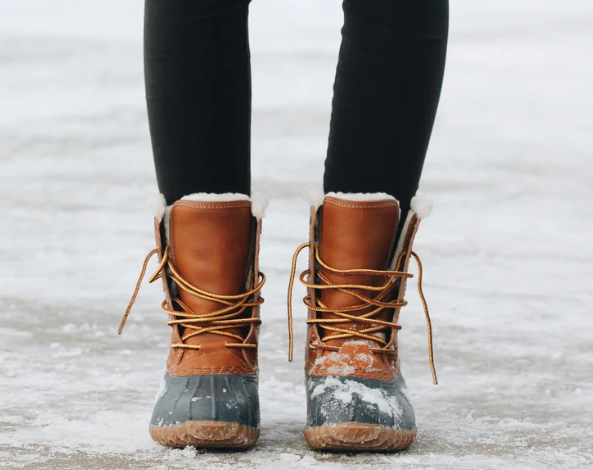How to Maintain and Care for Your Winter Boots

When it comes to footwear, shoes are often seen as an essential part of a man’s daily wardrobe. Taking care of them should be a regular habit, especially when winter arrives, bringing along cold temperatures and snowy conditions.
Winter can be particularly harsh on boots, and without the right maintenance, your favorite pair may not last as long as you’d hope. Whether you’ve recently bought a quality pair of leather boots or have a long history of collecting footwear, proper care can make a significant difference in their durability and appearance.
Why Winter Weather is Tough on Boots
The winter season, while perfect for layering clothes, can wreak havoc on your footwear. From snow to ice and freezing temperatures, winter conditions can quickly damage boots if not protected properly. The cold can cause leather to crack, while salt, snow, and moisture can further contribute to the deterioration of your shoes.
The main culprit in winter is moisture. If you’re commuting in the snow, it’s nearly impossible to avoid getting your boots wet. Without the proper care, constant exposure to water can significantly shorten their lifespan.
The Importance of Caring for Leather Boots
Leather boots are particularly vulnerable to damage in winter, especially when exposed to salt and water. Salt, commonly used on roads and walkways during the winter months, can strip leather of its natural oils, leading to cracks and stiffness. Leather soles are also susceptible to damage when exposed to moisture and extreme cold.
Another problem is the adhesive used in boot construction. High-quality boots tend to use less glue, but in more affordable options, excess glue is used to hold parts together. Unfortunately, when temperatures drop, the glue can become brittle, leading to separation or structural issues.
To prevent this, it’s essential to keep your boots warm and maintain them by regularly treating the leather with dyes or oils to keep the material supple and protected.
Preparing Boots for Winter Weather
Preparation is key to extending the life of your winter boots. Instead of waiting until they’re already wet or damaged, it’s best to take proactive steps to protect them from the elements.
One of the most effective ways to shield your boots from water damage is by applying protective sprays. These sprays repel water and can prevent stains and moisture from seeping into the material. Be sure to follow the manufacturer’s instructions for each product, as application methods may vary.
Popular water-repellent sprays include:
- Scotchgard Water Repellent
- Kiwi Camp Dry Heavy Duty Water Repellent
- Nano Fabric Coating by Hydrophobic Coating
Before applying any product, test it on a small, hidden area of your boots to ensure it doesn’t affect the color or texture.
Taking Care of Boot Soles
When it comes to boot soles, there’s not much you can do in terms of repair. The best course of action is to avoid wearing leather soles during the winter months or in rainy conditions. Rubber soles are a far better option, as they’re specifically designed to withstand wet and cold conditions.
Common Winter Boot Issues and Solutions
Winter conditions can bring about various challenges for your boots. Here are some common problems you might encounter and how to address them:
Wet Boots
It’s almost inevitable that your boots will get wet in snowy or rainy conditions. To protect your boots from water damage, always have an umbrella on hand during rainy weather. In addition, treating your boots with a water-repellent spray can help keep moisture at bay.
Proper Drying Techniques
How you dry your boots after they get wet is just as important as preventing them from getting wet in the first place. Never place boots near a radiator or use a dryer to speed up the drying process, as excessive heat can warp the shape of your boots and damage the material.
Instead, let your boots dry naturally in a well-ventilated area for a day or two. To help absorb moisture, you can stuff your boots with newspaper or a drying agent like silica gel.
Preventing Salt Damage
Salt stains are one of the most common issues during winter. If your boots are exposed to salt, wipe them down with a damp cloth as soon as you can after being outdoors. If stains persist, clean the boots thoroughly and then polish them to restore their appearance.
For stubborn salt stains, use a shoe care kit with appropriate products to remove the marks and nourish the leather.
Preventing Wrinkles
Wet leather boots often shrink and develop wrinkles. To avoid this, invest in a pair of shoe trees to maintain their shape while drying. If you don’t have shoe trees, crumple newspaper and stuff it inside your boots to help them retain their original form.
Managing Foot Odor
Wet boots can absorb moisture and develop unpleasant odors, which can impact your image. To prevent this, avoid wearing boots when they’re damp. You can also use sprays to control foot odor before and after wearing your boots.
Caring for Formal Shoes in Winter
Formal shoes require similar care to leather boots, but with a few additional considerations. Here are four essential tips for keeping your dress shoes in good condition during winter:
- Protect your shoes before wearing them: Use water-repellent sprays to give your formal shoes an extra layer of protection.
- Dry them properly: After wearing your shoes, insert shoe trees to help absorb moisture and keep their shape.
- Clean your shoes: Salt stains and dirt can damage the leather, so make sure to clean your shoes after each use.
- Use odor control sprays: Keep your shoes smelling fresh by applying odor-controlling sprays.
Choosing the Right Winter Footwear
Not all boots are suitable for winter conditions. While leather boots are a solid choice for colder weather, they may not be ideal for areas with heavy snowfall. In such cases, consider investing in higher boots with insulation to keep your feet warm. For areas with lighter winters, stylish suede boots may be a good option, but they require extra care to avoid water damage.
How to Care for Suede Winter Boots
Suede boots can be a great option in milder winter conditions, but they should be kept away from water whenever possible. If your suede boots do get wet, here’s what you should do:
- Remove them and insert shoe trees to maintain their shape.
- Let them dry naturally for three to four days.
- Once dry, use a suede brush to gently clean the surface.
- If necessary, apply a suede dye or spray to restore the color.
- Allow the boots to dry completely before wearing them again.
Suede boots require extra attention, so only wear them in dry, snowy conditions. Once you’ve properly cared for them, they should be ready for your next outing.
Conclusion
Maintaining your winter boots is crucial to ensuring they last for many seasons. By taking steps to protect them from moisture, salt, and cold, and using the right cleaning techniques, you can extend the lifespan of your boots and keep them looking great. Whether you’re facing snowstorms or rainy conditions, investing in quality footwear and providing regular care will ensure your boots stay in top shape throughout the winter months.





